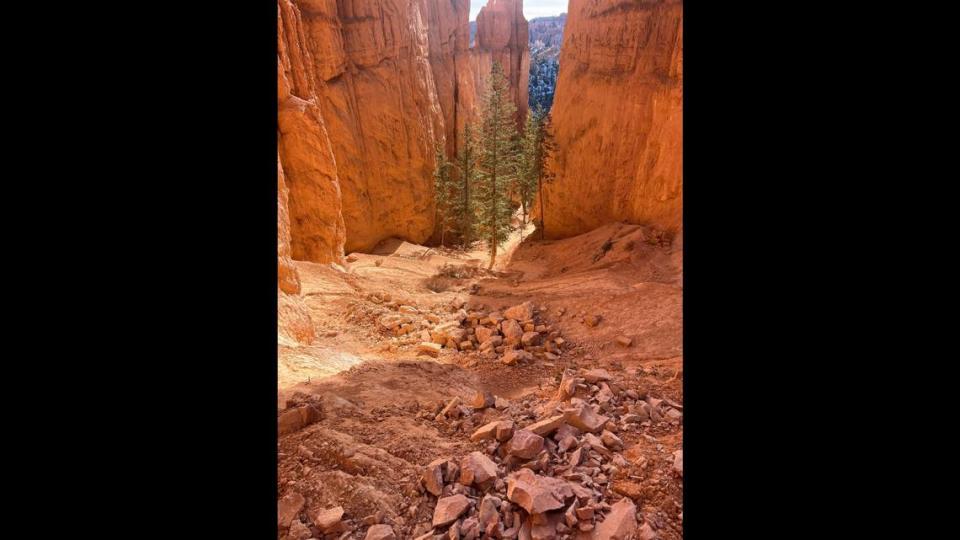Canyon wall falls in Utah national park famous for iconic hoodoos. What caused it?
Thousands of pounds of rock peeled off a canyon wall in southern Utah and landed on one of the nation’s most iconic trails in Bryce Canyon National Park.
It happened around Dec. 8 on the Two Bridges side of the Navajo Loop Trail, which leads to a towering hoodoos rock formation known as Thor’s hammer.
“A swathe of rocks and small boulders” estimated at around 4,000 pounds was found “across the trail’s lower switchbacks” and retaining walls, park officials reported in a Dec. 13 Facebook post.

No injuries — or witnesses — were reported and no damage was done to Thor’s hammer.
“The Navajo Loop ... is one of the most popular trails in Bryce Canyon National Park,” park spokesman Peter Densmore told McClatchy News in an email.
“Both sides of the Navajo Loop feature sections of winding switchbacks that are some of the park’s most iconic imagery.”
It took two days to clear the trail, which winds “between narrow walls of colorful limestone with views of towering Douglas-fir trees,” the National Park Service says. Damaged retaining walls at the rockfall site will be repaired in the spring, officials said.
Bryce Canyon is famous for “otherwordly” rock formations known as hoodoos — “spires and towers that appear as forests of rock,” according to the U.S. Geological Survey. Hoodoo pillars are formed through uneven weathering and erosion of the sandstone, experts say.
Parts of the park — including sections of the Navajo Loop Trail — are typically closed in winter due to the risk of rockfalls in narrow areas.
Some national parks in the southwest have reported an increase in rockfalls due to intense summer heat associated with global warming.
It’s the opposite situation in Bryce Canyon, however.
The 35,835-acre park sits at a higher elevation than its surroundings, resulting in below-freezing temperatures on many nights, the USGS says.
“Here at Bryce Canyon we experience an average of around 180 annual ‘freeze/thaw cycles’ in which daytime temperatures rise above freezing and then fall below it overnight,” Densmore says.
“Water seeps into cracks in the rocks, expands into a wedge of ice, then melts, refreezes, and so forth. This cycle is thought to be the predominant shaping force of Bryce Canyon’s hoodoo rock spires.”
The park saw its first significant snow of the season around Thanksgiving, and that likely set the recent rockfall into motion, he says.
Photos shared on Facebook show the rockfall left two noticeable “rectangular cavities” in the canyon wall, officials said.
Bryce Canyon National Park is about 260 miles south of Salt Lake City.
Searing heat threatens ancient structures as brittle cliffs fall in New Mexico park
Cause of rock slide solved when driver checks Google Maps, New Mexico officials say
‘Geological wonder’ in seafloor canyon off Hawaii resembles a wall of sunken columns

